NOTE: We are open & operating in RED. COVID-19 Vaccine Passports required. Find out more here.
Written by Kristen (Expedition Kristen)
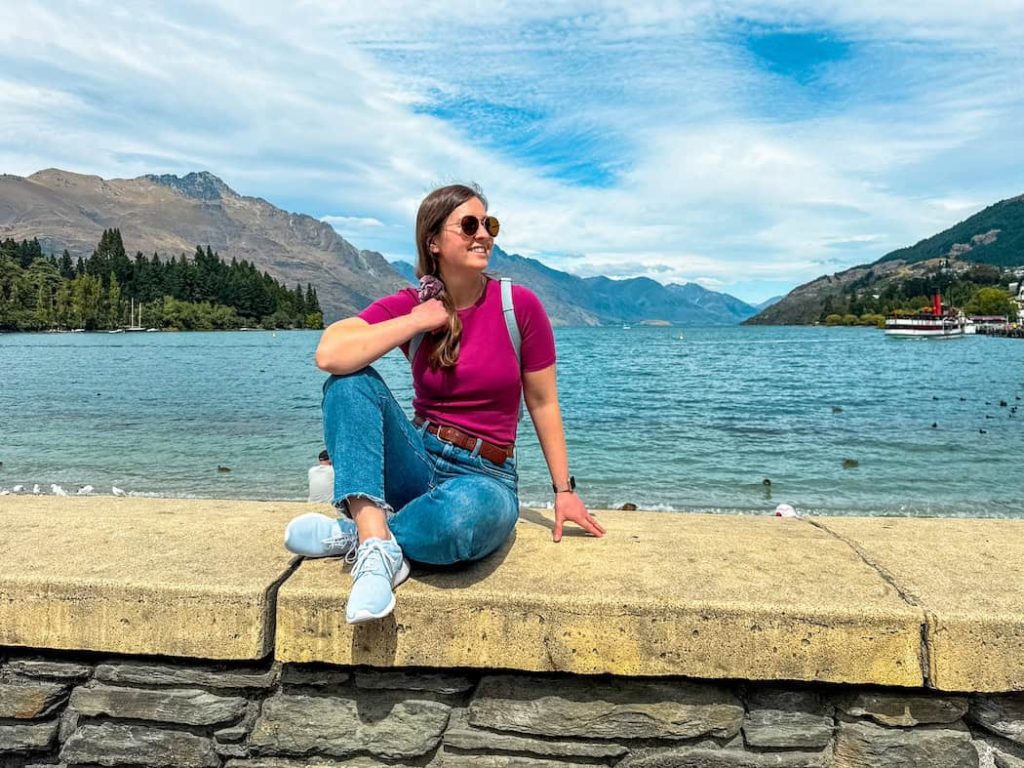
New Zealand, an island nation in the southwestern Pacific Ocean, offers a rich and diverse history. This is characterized by the arrival of the Māori people over a thousand years ago and subsequent European colonisation in the 18th century. If you are wondering what to do in 10 days in New Zealand, exploring its renowned wineries can be a delightful part of your journey. The country’s unique flora and fauna are unparalleled, with lush green landscapes, rugged mountains, and pristine coastlines. Iconic species like the kiwi bird and the silver fern are emblematic of New Zealand’s natural beauty.
The people, known for their warmth and hospitality, embody a vibrant culture that blends Māori traditions with European influences. Thousands of people visit New Zealand every year to take in its breathtaking scenery. From world class wine to Milford Sound’s fjords, there is much to explore. The nation’s commitment to environmental conservation adds an extra layer of allure. This makes it a must-visit destination for both nature enthusiasts and culture seekers.
We were in New Zealand for 10 days, and while it was incredible, we were of course unable to see everything. If you have the chance, I’d recommend going for at least 2 weeks. However, 3-4 weeks would be even better.
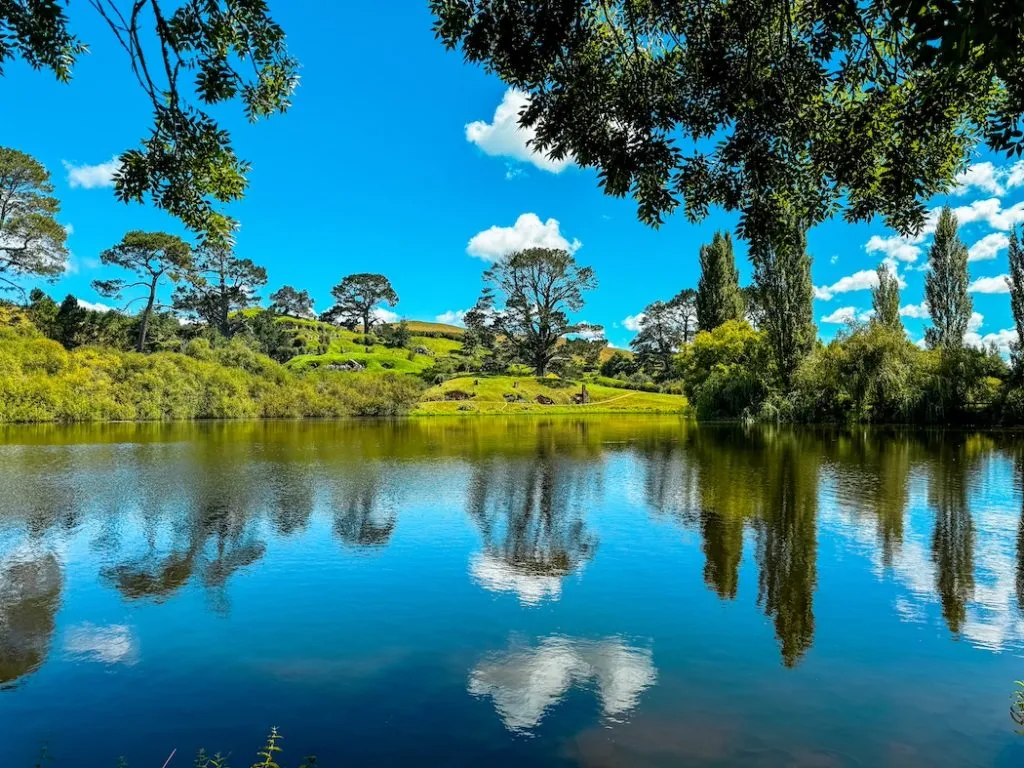
Auckland, the largest city in New Zealand, offers a dynamic urban experience with a unique blend of fine dining, art galleries, and an energetic night life. This hilly city is clean yet vibrant and makes for a great place to begin your trip. The Sky Tower, an iconic landmark, dominates the skyline and provides panoramic views of the city and its harbours. Auckland’s waterfront is lined with lively restaurants and cafes, many of which have excellent views of the water. Be sure to enjoy the many museums as well. Visit the Auckland War Memorial Museum, which showcases the country’s rich history and Māori heritage. Also, the Auckland Art Gallery includes artwork from Picasso and Dali. And of course, don’t miss out on a day trip to see Hobbiton and the Glowworm Caves.
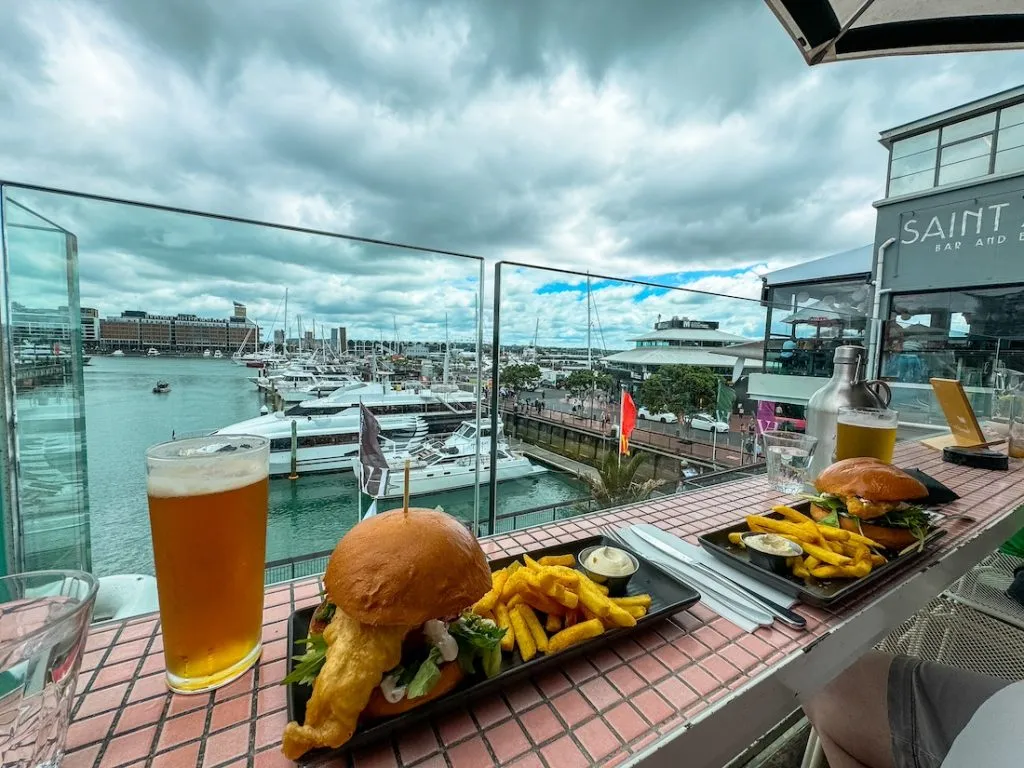
Waiheke Island, a short ferry ride from Auckland, is a haven of serenity and natural beauty. Renowned for its 30 vineyards, olive groves, and pristine beaches, Waiheke provides a perfect escape from the hustle and bustle of the big city. Explore the island’s art galleries, enjoy a guided food and wine-tasting tour, or relax on the sandy beaches. Waiheke’s relaxed atmosphere and stunning landscapes make it an ideal retreat. This is perfect for those seeking a tranquil getaway. Make it a day trip, or stay for a few days.
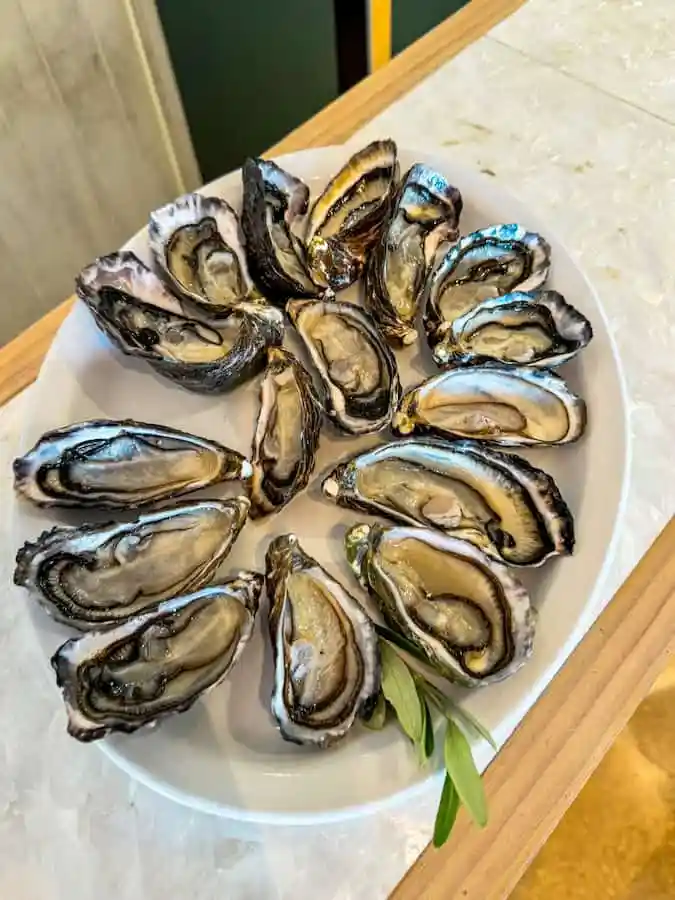
Wellington, New Zealand’s capital city, offers a blend of cultural richness and natural beauty with its hilly streets and picturesque harbour. Enjoy a day trip to the world-famous Martinborough wine region. Spend time exploring Te Papa Tongarewa, the national museum. It showcases New Zealand’s history, art, and culture. Stroll through the Wellington Botanic Garden, which offers a peaceful retreat of roses and trees with panoramic city views. A visit to the Zealandia eco-sanctuary is a must for any bird lover. Zealandia offers an immersive encounter with native wildlife, including the elusive kiwi bird. Enjoy several hours walking around the property listening to all the birds chatter. And don’t miss out on the trolley, which brings you back down to the harbor. This is perfect after a day filled with walking across Wellington’s steep and hilly streets.
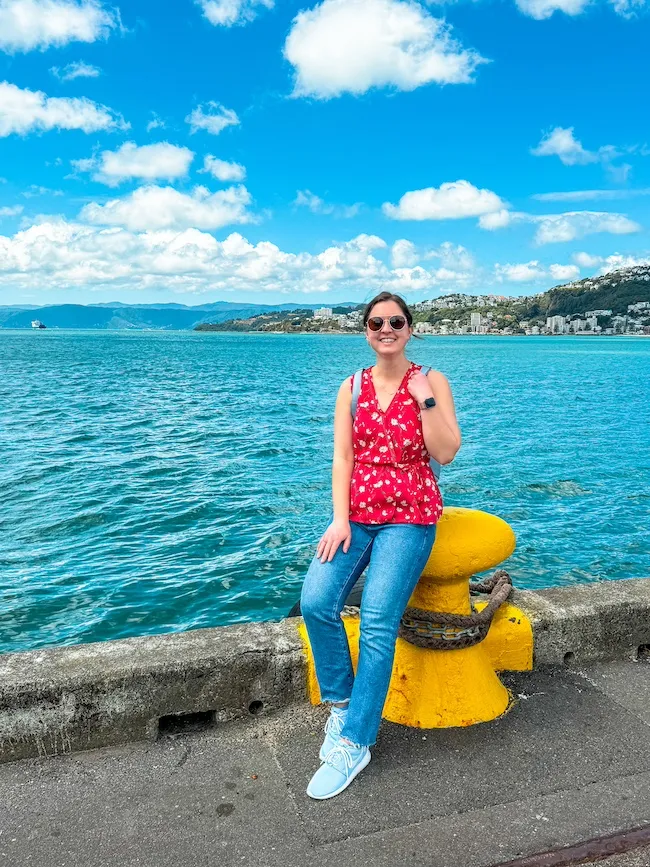
Queenstown, nestled on the shores of Lake Wakatipu and surrounded by jagged mountains, is a playground for adventure seekers and nature enthusiasts. Known as the “Adventure Capital of the World,” Queenstown offers a myriad of outdoor activities. From bungee jumping off the historic Kawarau Bridge to heli-skiing on the pristine slopes of The Remarkables, there are plenty of adventures. If you’re looking for something more relaxing, enjoy a tasting tour of the Otago wine region, either by bus or bicycle. The tranquil Milford Sound, a UNESCO World Heritage Site, is well worth the day trip from Queenstown. You’ll see fjords, waterfalls, and wildlife. Hopefully, your tour guide will pull over to show you a few spots where scenes from Lord of the Rings were filmed. Queentown’s vibrant nightlife and charming lake walk, surrounded by mountains and lined with shops and restaurants, make it an incredible destination.
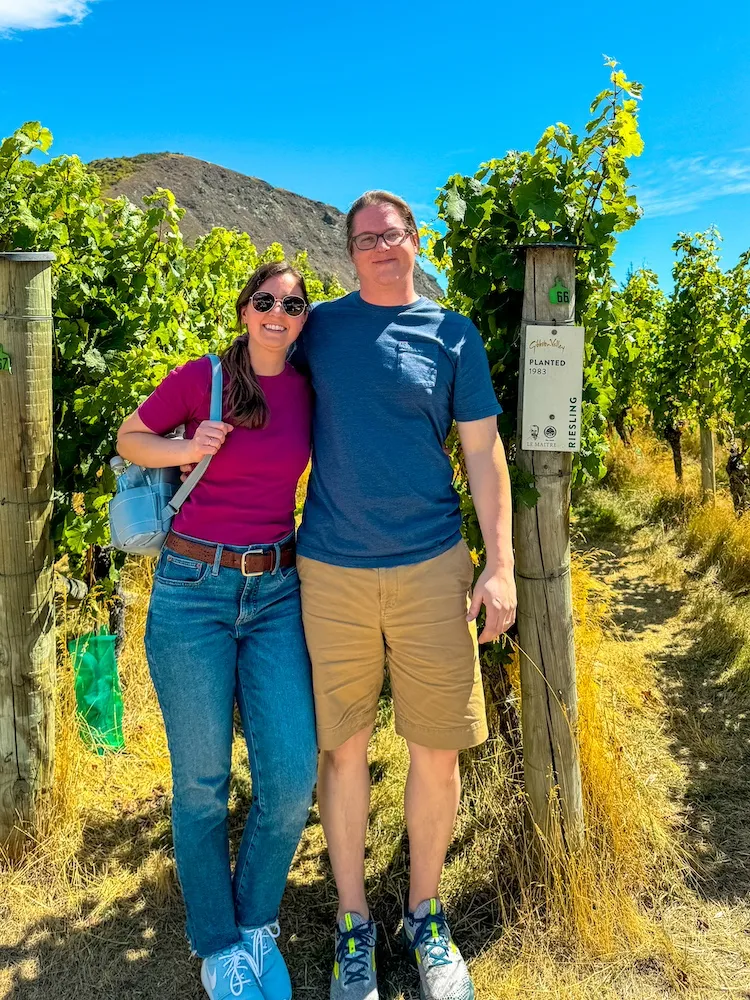
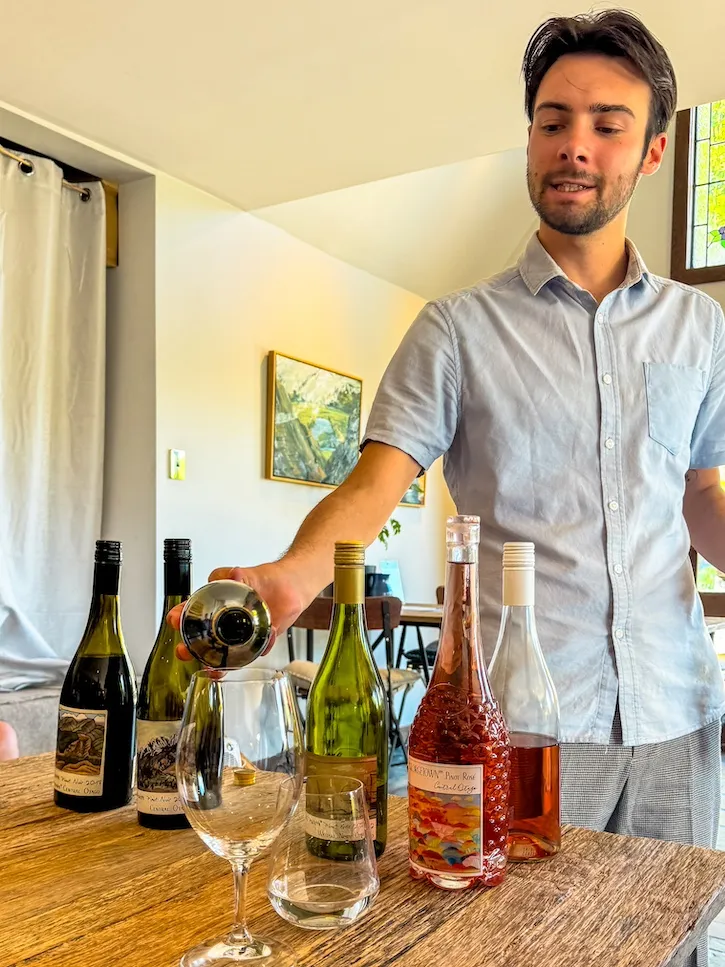
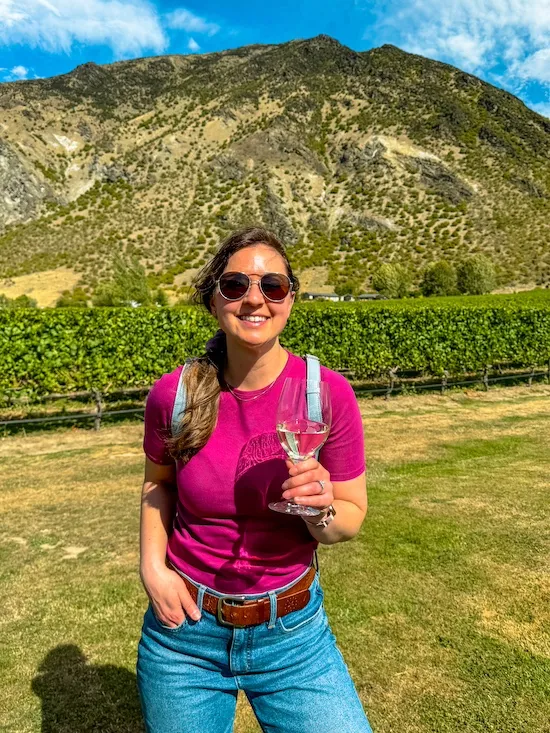
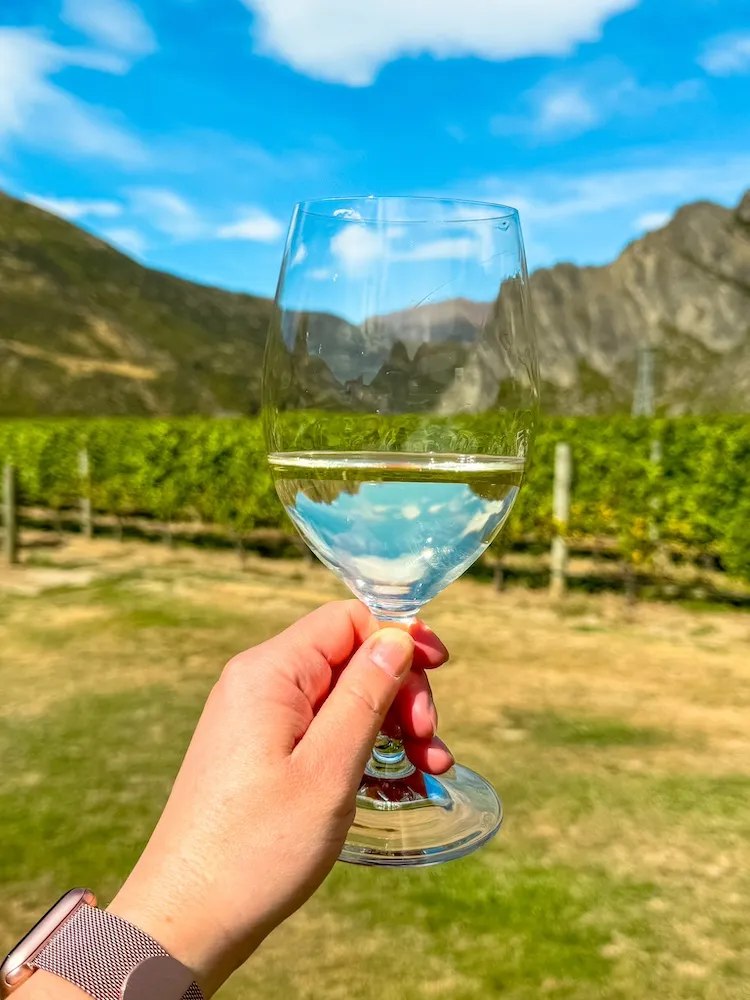
If you ever have the chance to go to New Zealand, do not hesitate. Take the trip. Use up all your vacation days, save up for it, go with friends, go alone. Whatever it takes. While I’ve been fortunate enough to have traveled all over the United States and all over the world, New Zealand is as magical as they say. Before our trip even ended, my husband and I were already talking about what we’d do when we returned to New Zealand someday in the future. For me, it felt like this strange utopia where everyday was perfect; the food, the weather, the people. And after we left, it felt like a dream I had and wanted more of.
Looking for more international inspiration? Check out my blog posts on Paris! For more local ideas, check out my blog posts on Duluth, Bayfield, and Minneapolis.
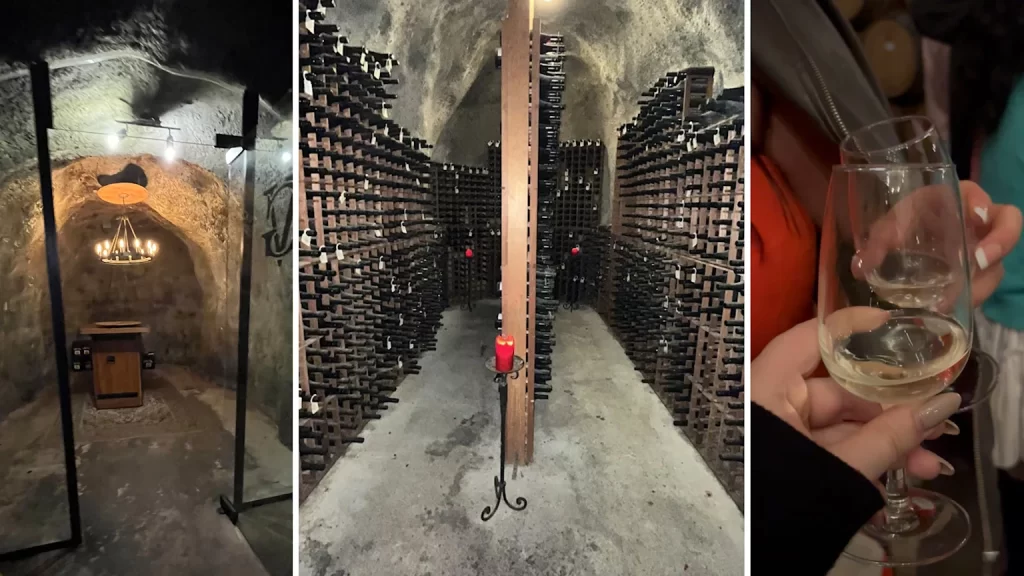
In just one weekend, this girls trip to Queenstown had it all. From heart-racing freefalls over the Shotover River and high-speed jet boat rides, to wine tasting in NZ’s largest wine cave and a surprisingly lovable 18km e-bike adventure.
Queenstown has been dubbed the ''Adventure Capital of the World'', and for good reason! Whether you’re craving adrenaline, scenic serenity, or just good wine and better company, this trip proves you can have it all in 48 hours.
It is an absolute hub of outdoor activities, endless dining opportunities & street performers. The streets are bustling and the coffee is GOOD. The town itself is full of stylish boutiques, cozy cafés, and buzzing cocktail bars. It's ideal for exploring with your besties. Splash out on a fancy dinner at a lakeside restaurant like Botswana Butchery or Rātā, and toast to friendship with local pinot noir.
Queenstown offers a magical mix of opportunities, making it a dream destination for a girls’ trip.
If you're visiting in winter, don’t miss the chance to hit the slopes at Coronet Peak or The Remarkables. Both are perfect for beginners and seasoned skiers. After a day on the snow, unwind with après-ski drinks by a roaring fire or explore Queenstown’s vibrant nightlife, with chic bars like Little Blackwood or cocktail lounges tucked into alpine-style settings.
In warmer months, opt for a lake cruise or a paddleboarding session on the crystal-clear water. No matter the season, Queenstown delivers unforgettable moments and Instagram-worthy backdrops. It’s more than a trip—it’s a chance to reconnect, recharge, and celebrate the joy of friendship.
👉 Read the full itinerary and get all the insider tips HERE
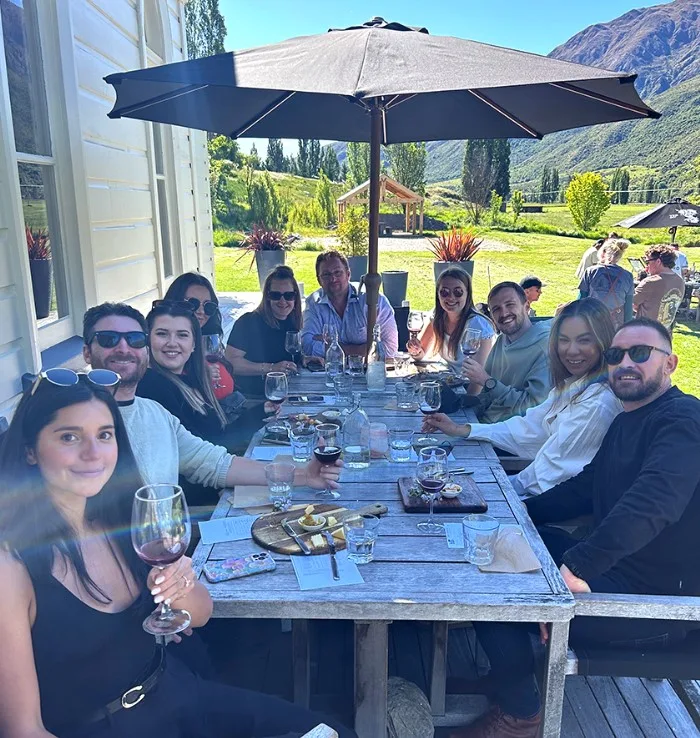
Photos courtesy of Sophie van Soest
Sophie and Jaime travelled to Queenstown as guests of Booking.com and Destination Queenstown.
Written by Craig Tansley
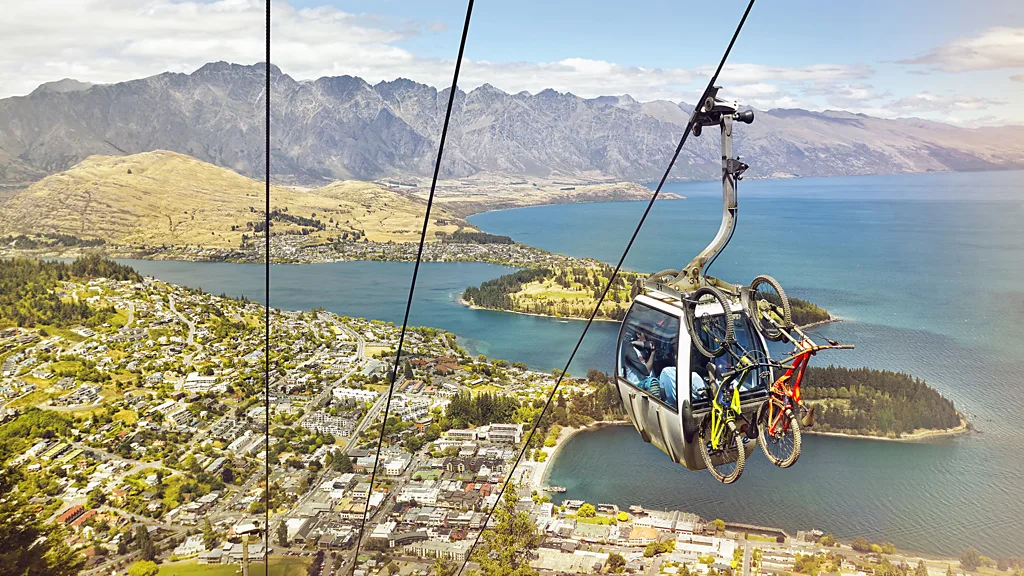
By 2030 – if things go to plan – you'll land in Queenstown on New Zealand's South Island (possibly aboard an electric-powered airplane) and make your way to town. This could be via an electric gondola or hydro-powered ferry. Skiers and snowboarders, who descend on this region in ever-increasing numbers from around the world – will ride electric-powered chairlifts to the surrounding ski resorts. This sustainable tourism vision aims to support a carbon zero future for Queenstown.
Year-round, travellers may take high-speed rides on Lake Wakatipu and along the rapids of the Shotover River aboard the world's first fully electric jet boats. Even the TSS Earnslaw – the hemisphere's oldest coal-fired steamship that has ran excursions since the 1970s – will run on hydrogen.
The region has launched an ambitious plan to become the first tourist town on Earth with a carbon-zero visitor economy by 2030. For decades, Queenstown has led the way in innovation, creating death-defying activities found nowhere else—earning it the title of “adventure capital of the world.” However, most of these activities still rely on fossil fuels. Now, the town is shifting focus and aiming to become the world’s leading ecotourism destination.
Aiming for a carbon-neutral visitor economy would be easier, as it allows for carbon offsets like tree planting. But Queenstown has set its sights higher. Achieving carbon-zero means the town must eliminate all carbon emissions entirely—making it a much more difficult but impactful goal.
"Well, 2030 creates urgency, doesn't it?" Destination Queenstown CEO Mat Woods asks rhetorically. "2030 seemed so hard to achieve that it got the community excited. It means that everyone in the community has to be part of this [push to carbon-zero]."
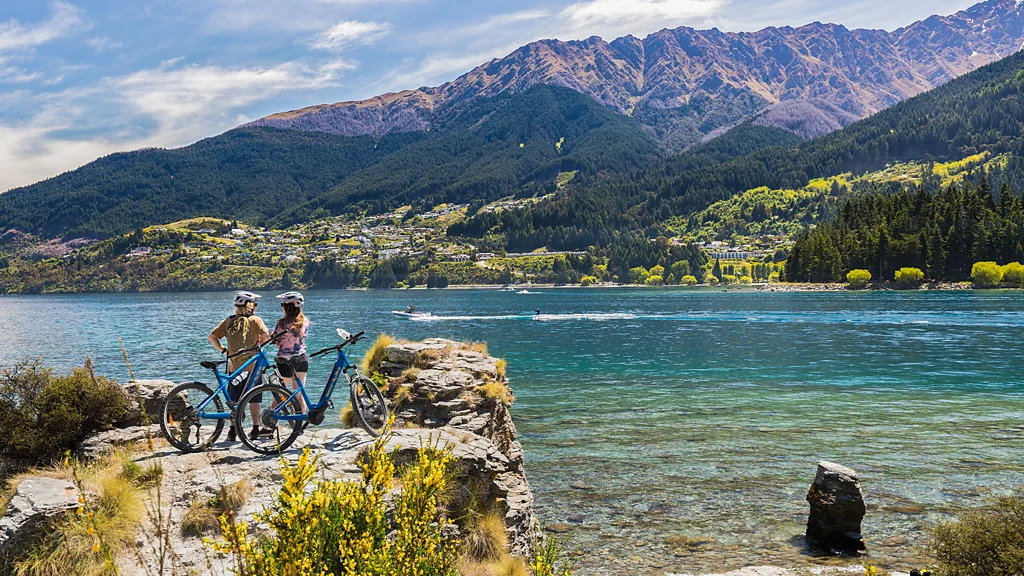
Queenstown’s environmental challenge began with growing concerns that the region’s infrastructure couldn’t keep up with the increasing number of tourists. Set around a lake and surrounded by the rugged Southern Alps, Queenstown has attracted visitors for decades. Ski resorts began operating in the 1940s, and by the 1960s, the town had developed a thriving adventure tourism industry built around its dramatic landscape. These developments helped establish Queenstown as one of New Zealand’s most popular destinations.
Last year, almost 400,000 international visitors came here. An almost 20% rise since 2019, just before the pandemic. This number is particularly significant when you consider Queenstown has a population of around 50,000.
"Locals were asking, what's in this for us," Woods says. "And can we really sustain this region the way it's going?"
Three local tourism organisations—Destination Queenstown, Queenstown Lakes District Council, and Lake Wānaka Tourism—proposed the bold carbon-zero goal in 2021. To their surprise, tourism operators embraced the idea."We took the plan out to the community and weren't sure what to expect," Woods says. "Everyone supported it. And that's the most important part in all of this. Every person has to play a part."
New Zealand eagerly awaits the big shifts towards environmental sustainability in tourism – like the trial of the region's first e-plane flight, set for 2026. Meanwhile, others are already getting stuck in. Mr Chippy, aka Michael Sly, has been quietly composting 20 tonnes of hotel food waste each month around Queenstown. His company, Waste To Wilderness, turns scraps left by tourists into nutrient-dense soil used for food growing. What a perfect example of regenerative tourism! "You don't have to take giant leaps," he says. "Take little steps in the right direction and you'll be amazed by what you can achieve."
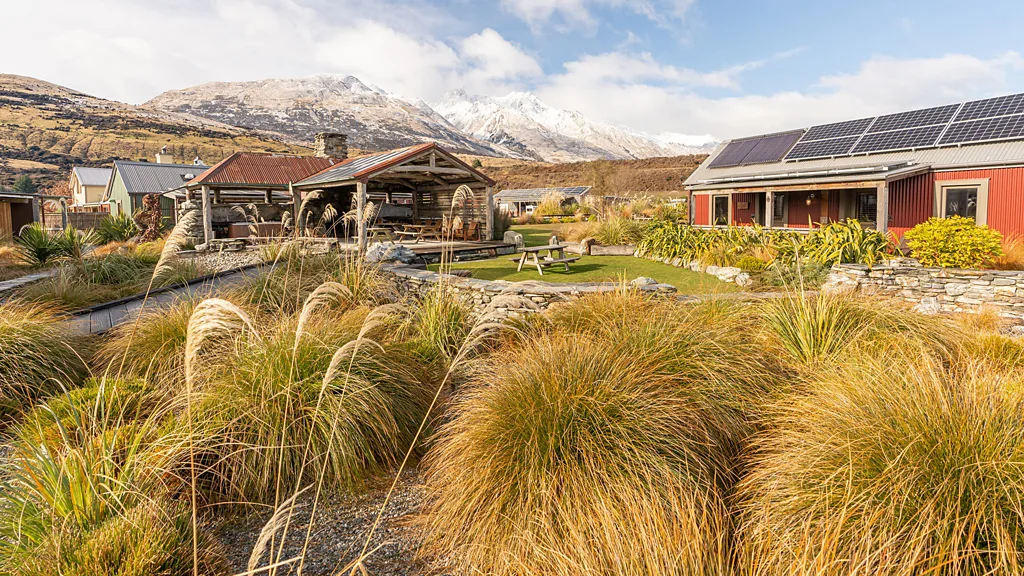
Given the number of tourists coming to Queenstown each year, local accommodation providers must become the big players in Queenstown's plan to run on alternative energy. The promising news is what Headwaters Eco Lodge has achieved – and long before the 2030 goalpost. They are the first accommodation on the planet to be recognised by the Living Building Challenge. The LBC are the most rigorous of all environmental assessment programmes.
Surrounded by the Southern Alps and braided river valleys in the hamlet of Glenorchy, 45 minutes' drive from Queenstown, the lodge is built entirely from recycled building material. It uses the world's most advanced compost toilets, while every litre of wastewater irrigates wetlands built through the middle of the property. Its power comes from one of the South Island's largest solar gardens – there's nearly 600 solar panels on site. These produce so much energy that the excess is used to power another business up the road.
"My husband Paul and I came up this idea of creating these slow tourism experiences that could support this idea of regenerative design," says Headwaters Eco Lodge co-owner, Debbi Brainerd. "We're in the most beautiful place here in Glenorchy. We liked the idea of creating accommodation that had a positive carbon affect, so we created these things in design to help us get there."
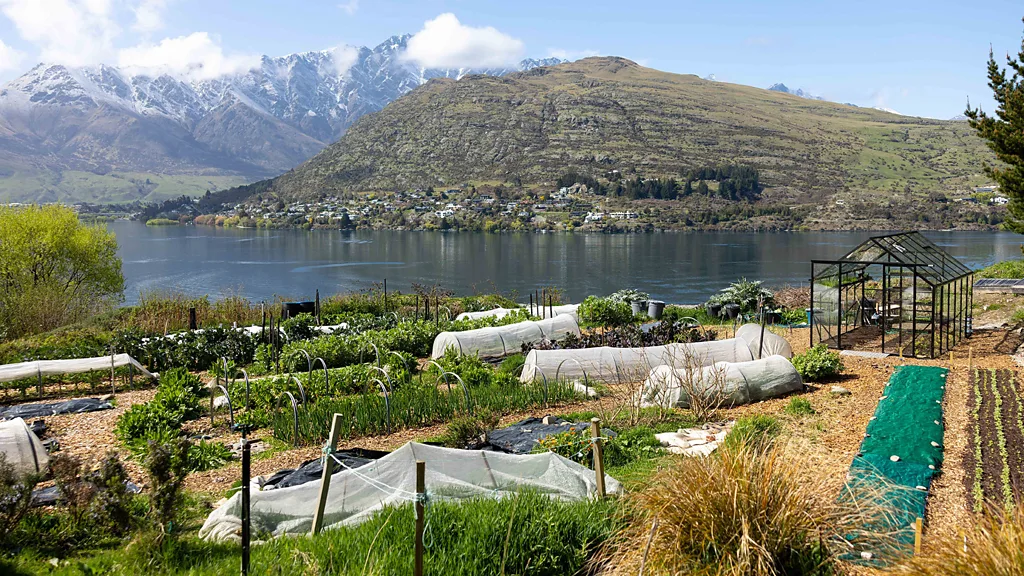
Queenstown's refurbished inn, Sherwood Queenstown, made Expedia's 2019 Top 10 eco-friendly stays list. It runs almost entirely off 248 solar panels. A full-time horticulturist grows nearly half of all produce required by the hotel's restaurant within the property too. "We say that it's all about small things done consistently that really make a difference," explains general manager Hayley Scott. "But it's also important to have big goals to work towards. Everyone in this community is committed to achieving carbon-zero by 2030. It's got us all thinking."
A closer look reveals that world-first environmental innovations are emerging across the Queenstown region. Shotover Jet—famous for speeding travellers through the narrow canyons of the Shotover River at 85 km/h—is trialling the world’s first electric-powered jet boat. After three years of development, the prototype can perform the same daring spins and turns as its fuel-powered counterparts—and it's set to be even more powerful. Once complete, Shotover Jet plans to share the prototype with the wider industry to help eliminate carbon emissions from all jet boats in Queenstown.
The world’s first electric hydro-foiling ferry will soon start operating on Lake Manapōuri, just southwest of Queenstown. The ferry is expected to save more than 240 tonnes of carbon emissions each year. This is equivalent to removing 52 petrol cars from the road. Designed in Sweden, the ferry will run solely on battery power beginning in early 2025. Local Frankton Marina recently upgraded their facilities to support electric boat charging, preparing for the same type of ferry to operate on Lake Wakatipu next.
The innovations towards a carbon zero visitor economy keep on coming. Local wine tour company – Appellation Wine Tours – has introduced two new electric vehicles to their fleet. Another tour company, Nomad Safaris, has started Tesla Tours. They are using zero-emission electric vehicles on private tours to the most scenic parts of the region.
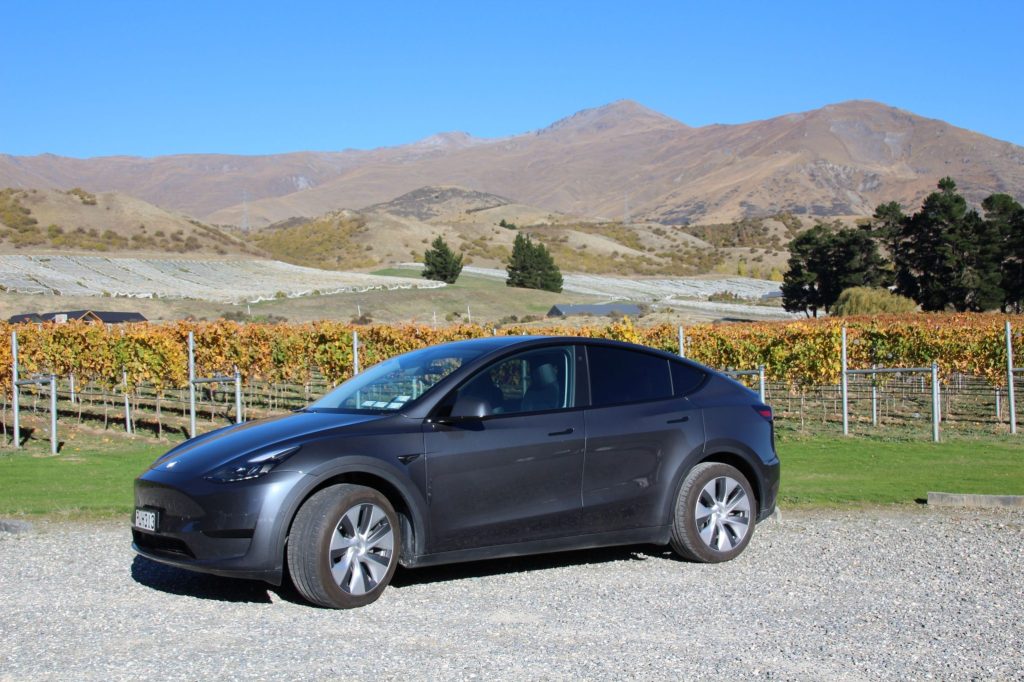
The region has also developed 130km of bike trails. Following the edge of Lake Wakatipu, deep into the backcountry beyond town & along suspension bridges crossing the emerald-coloured Kawarau River. These trails are making Queenstown globally recognised as a cycling destination. By 2026, biking is expected to grow to half the size of the region’s ski economy, which currently dominates tourism...but has a much larger carbon footprint.
Every one of these developments spur other businesses to push for their own environmental victories. Motivating each other for the next big change. As global temperatures surge and storms wreak destruction of unprecedented proportions, it's inspiring to see an entire community of tourism operators embark on an aim to cut 20 years off the carbon-zero target (set by the United Nations Climate Change Council). Efforts may go largely unnoticed in mainstream media, but this community of former fuel-guzzlers plan shows the world there's still hope yet.
Written by Queenstown, NZ
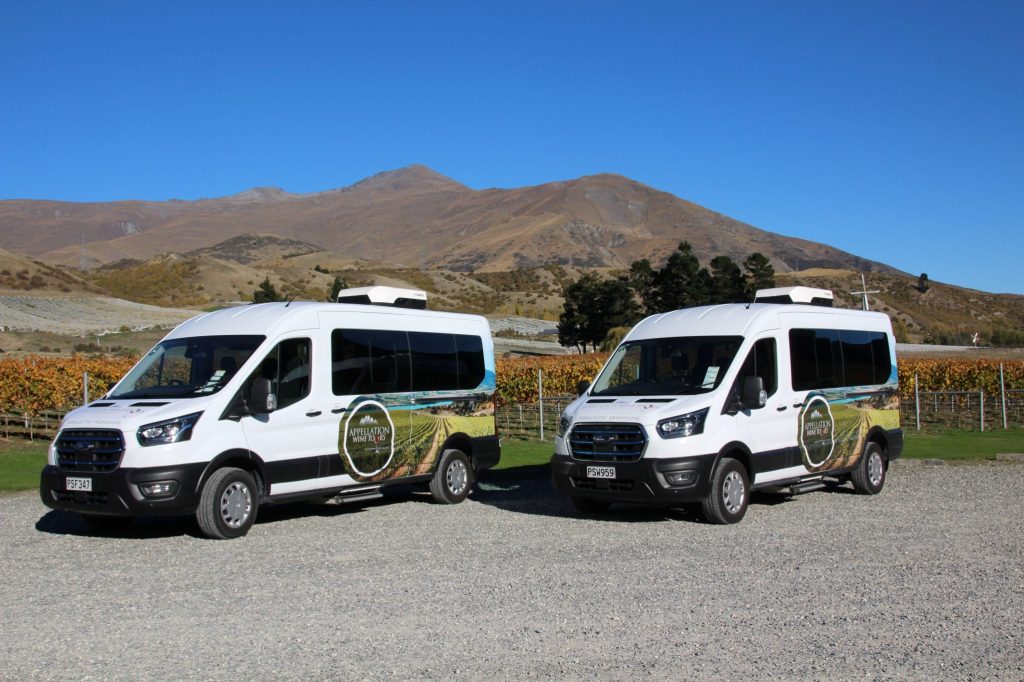
With connections to the transport industry since the 1920s, Appellation Wine Tours has a long history of showcasing fine wines, local sights, and heritage attractions. They are committed to sustainability. Importantly, they have embraced electric vehicles, which are emission-free, for their tours. This proves that electric vehicles are emission free in the most practical sense.
After they switched to 80% electric in 2022 for the Nelson's public bus fleet, the owners were inspired. They began to wonder how electrification could benefit its other businesses, including Appellation Wine Tours.
On the road now for over 24 years, Appellation covers more than 5,000 kilometres in an average week during peak season. This is due to daily small-group and private tours. Now, the business proudly leads by example with its emissions-free kilometres growing by the day. This is thanks to their electric vehicles. They purchased two new electric Ford E-Transit 12 seater vans in December 2023. The team at Appellation quickly noticed the rewards with operational efficiencies. They also benefited from economies of scale. Moreover, they observed the obvious environmental benefits.
“For more than two decades our tours have been an effective way of reducing emissions around the district - this is compared with individual car travel. So we wanted to take it a step further by investing in zero emissions vehicles,” - Sarah Russell, General Manager at Appellation Wine Tours. Indeed, electric vehicles are now leading the way toward emission-free travel.
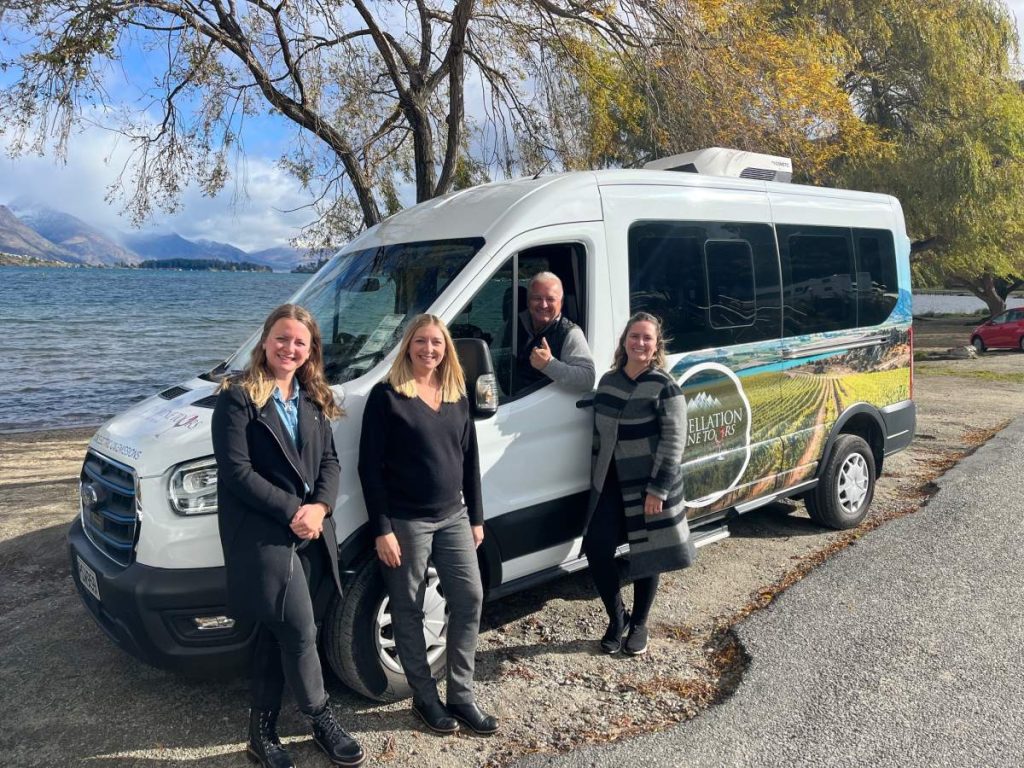
Supporting Queenstown Lakes' goal of achieving a carbon zero visitor economy by 2030, environmental sustainability was an important factor. This was strongly considered when Appellation looked into electric vehicles.
Although their electric vehicles require a higher upfront investment—especially since these are custom-made—their operating costs are significantly lower than those of fuel-based alternatives.
“Electricity generally costs less than diesel or petrol, and we spend less on maintenance because EVs have fewer moving parts and experience less wear and tear,” says Stu Cordelle, Business and Sales Manager at Appellation Wine Tours.
Electric vehicles typically use fewer parts and need fewer replacements. They require servicing less frequently. Additionally, large electric vehicles in New Zealand benefit from a government incentive. They are exempt from road user charges until December 2025, creating further savings for the business. “Vehicle driving range was another important consideration. In a typical day including pick-ups and drop offs around Queenstown, a tour can cover anywhere between 150 – 200 kilometres” Sarah adds.
An EV can drive an estimated 250 km per trip. This allows Appellation Wine Tours to explore the district comfortably without needing to stop and charge. This setup delivers a great experience for their guests. The company installed EV charging stations at their headquarters in Frankton, so vehicles start each day fully charged and ready to go. This approach saves time for drivers and boosts efficiency across the business. It eliminates the need to top up fuel at the end of each day.
Sarah explains, “It’s peace of mind for our drivers. They know they can come back to the yard and charge it ready for the morning.”
Many wineries and cellar doors have also installed their own electric charging stations.
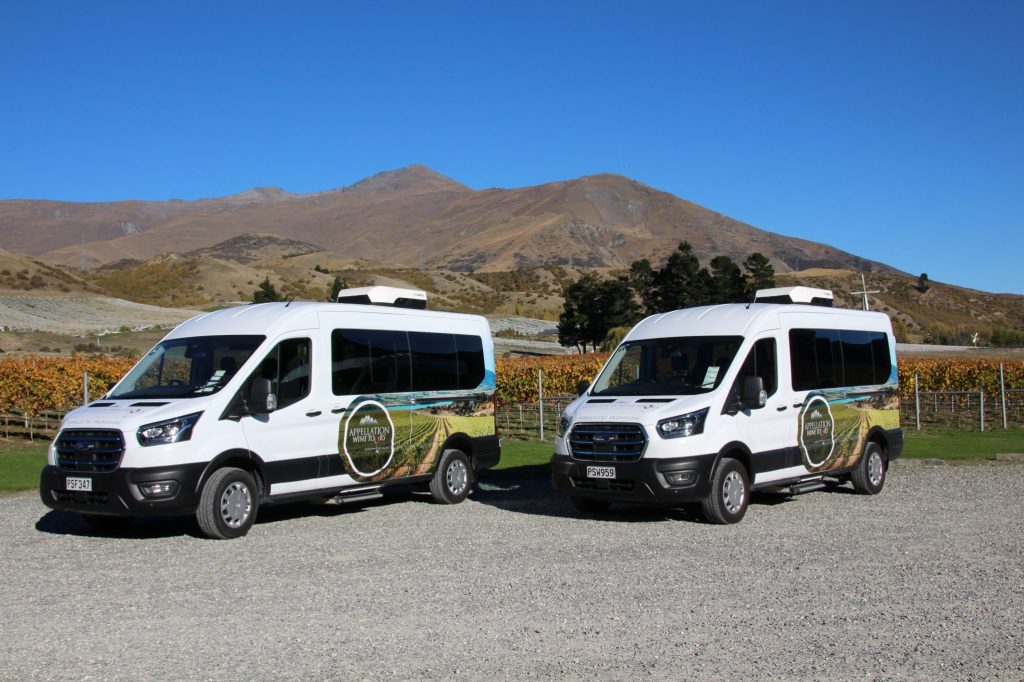
Looking ahead, the team is learning each day about the way speed and weather can impact driving range. They are adapting as they go. They’re also looking at continuing to invest more in sustainable business practices and assets, and starting to measure carbon use.
Larger electric passenger vehicles in New Zealand are not readily available and hard to source. So Appellation’s advice to anyone thinking about electrifying a fleet is to plan it early. Investing in the two Ford E-Transits is just the beginning for Appellation. It is a step in the right direction for business, guest experience and the wider region.
If you'd like to see more ways in which Queenstown as a whole is aiming towards its goal to ''Electrify Queenstown''...take a look here. With a goal of being carbon zero by 2030, there's a lot of changes pending. This includes the transition to electric vans.
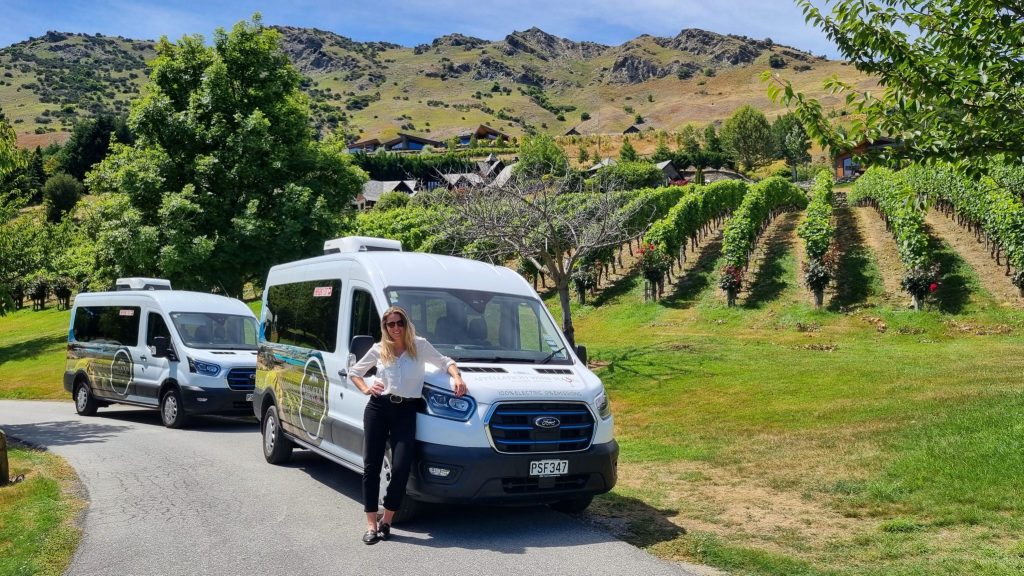
Proudly introducing sustainable transportation with electric vans (EVs) into their fleet. Appellation Wine Tours have been the leading provider of immersive wine experiences in the Central Otago region for over 24 years. This significant investment underscores the company's commitment to long-term sustainability. It sets a new standard for eco-conscious tourism in the area.
The introduction of these state-of-the-art EVs aligns seamlessly with the company's mission. With this intention, Appellation aim to provide unforgettable wine tours while prioritising sustainability. They are reducing their carbon footprint and promoting environmentally conscious tourism, thanks to their new fleet of electric vans.
First in the Region to Offer Wine Tours in an EV: Appellation Wine Tours takes pride in being the first in the Central Otago region to pioneer wine tours in an EV. They are leading the way in sustainable travel experiences.
This ground-breaking move with electric vans reinforces the company's dedication. With this in mind and a big focus on showcasing the finest vineyards and scenery while prioritising eco-friendly practices, Appellation are enhancing the overall experience for their valued customers.
Sarah Russell, General Manager of Appellation Wine Tours expressed enthusiasm about this eco-conscious initiative, stating -
"At Appellation Wine Tours, we are always thinking about our environmental impact and going electric made sense. We want to continue to provide exceptional experiences whilst also contributing toward a more sustainable future.”
“The introduction of the Ford Transit EVs represents a significant step towards decarbonisation and a sustainable future for tourism in the Central Otago region."
The new Ford Transit Electric Vans are now in operation. Appellation Wine Tours invites wine enthusiasts and eco-conscious travellers to come. They can embark on unforgettable journeys throughout the breath-taking landscapes of Central Otago.
If you'd like to see more ways in which Queenstown as a whole is aiming towards its goal to ''Electrify Queenstown''...take a look here. With a goal of being carbon zero by 2030, there's a lot of changes pending. This includes the transition to electric vans.
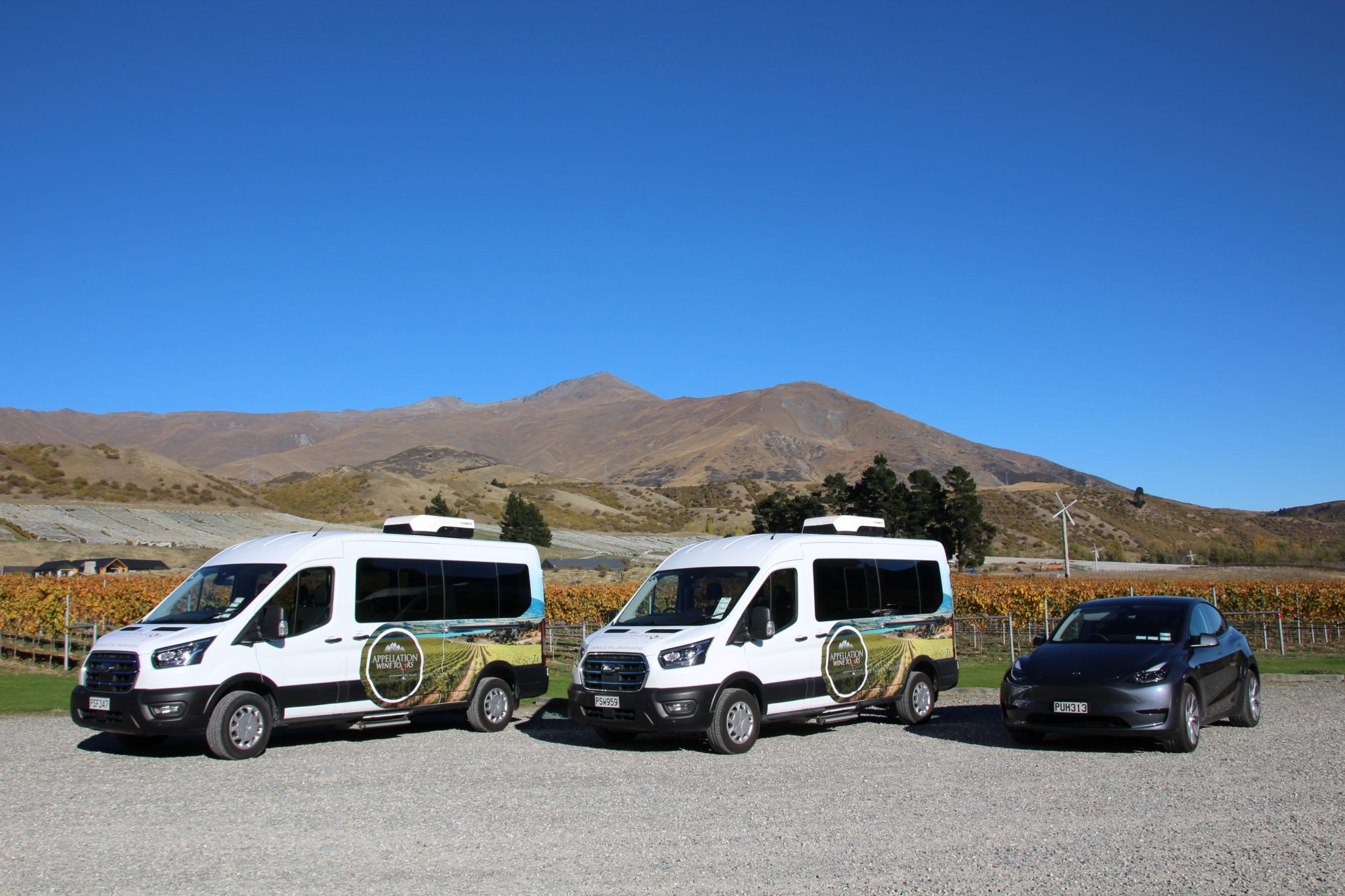
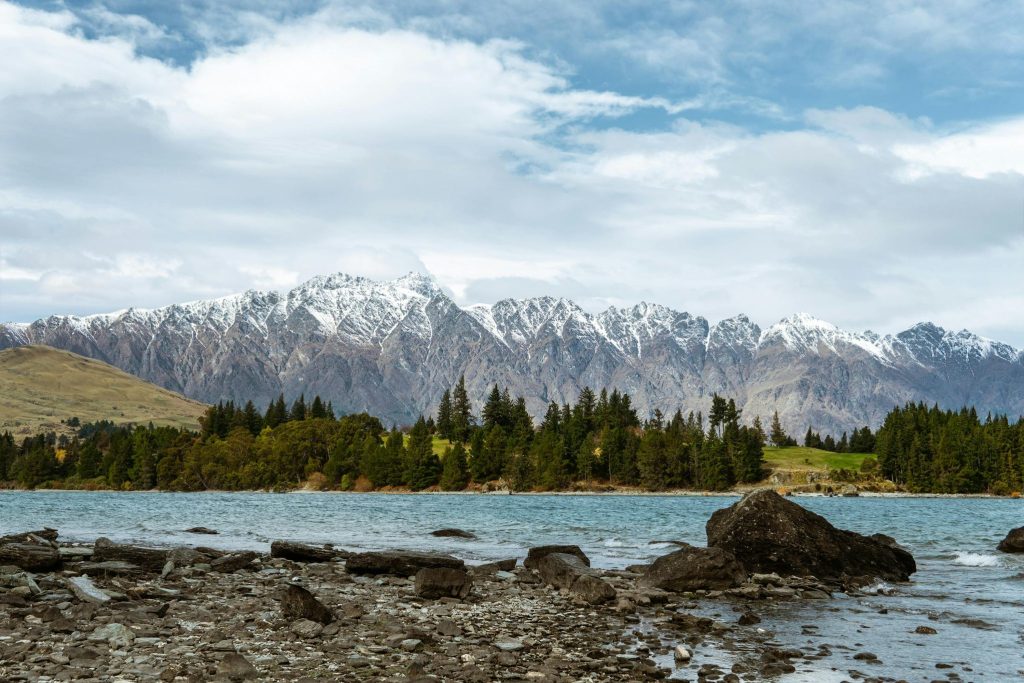
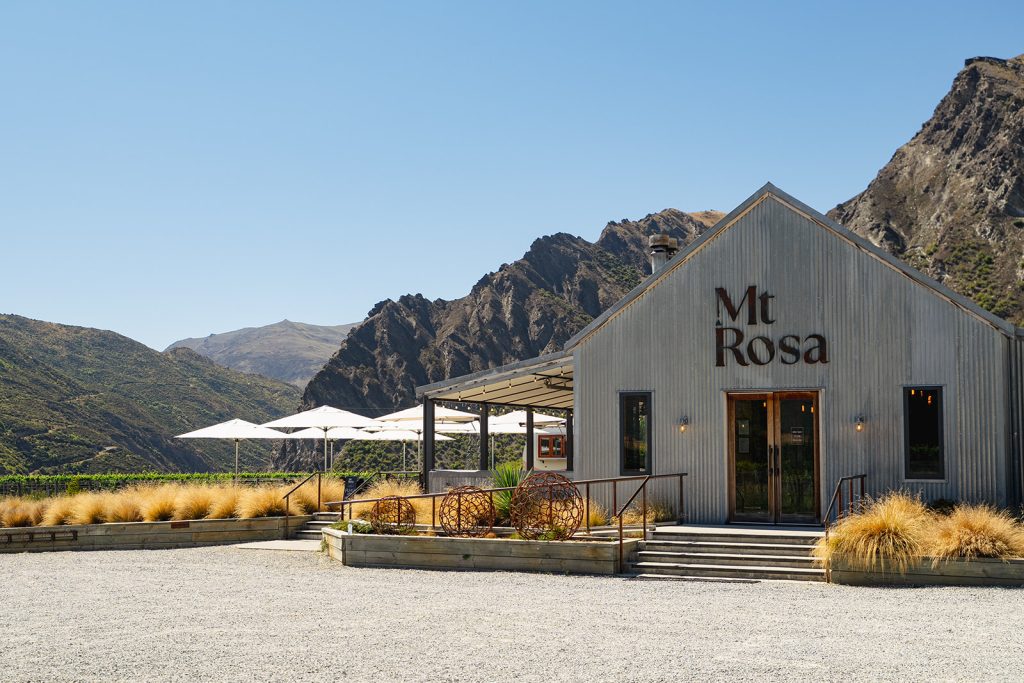
If you're planning what to do for 10 days in New Zealand, leaving your rental wheels behind and allowing the team from Appellation Wine Tours to drive you direct to Central Otago's premium vineyards is a must. A highlight of the half-day "Valley of the Wines" tour is a visit to the impressively carved wine cave at the venerable Gibbston Valley Winery where you can sample and buy some of the stellar region's finest drops, including its pioneering pinot noirs. The visit is one of a selection of itineraries on offer if you're looking for ideas on what to do 10 Days in New Zealand. See appellationwinetours.nz
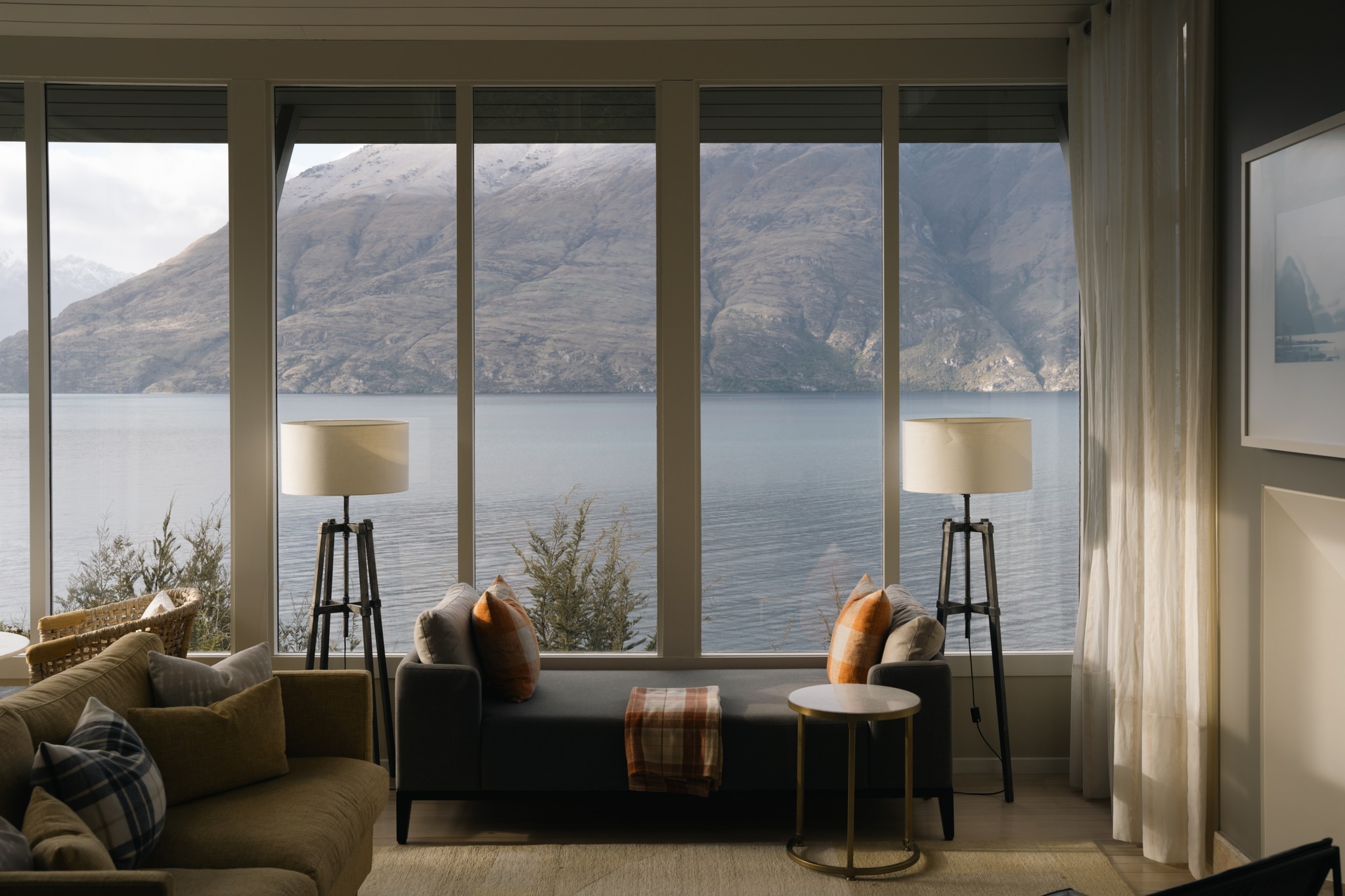
New Zealand’s luxury lodges, invariably owned by wealthy and visionary American benefactors, enjoy an international reputation for their superb locations, sumptuous comforts and fine food and wine. The embodiment of this characteristically Kiwi-style of accommodation is the contemporary Matakauri Lodge, discreetly perched beside a serene stretch of majestic Lake Wakatipu, minutes outside of QueenstownIt's the perfect place to stay if you're wondering what to do 10 days in New Zealand. The tariffs may be as steep as the adjacent mountainsides but the experience is well worth the splurge. See robertsonlodges.com
Where is New Zealand's best restaurant? Auckland? Wellington? Christchurch? No, it's the longstanding and long well-regarded winery restaurant, Amisfield, set at a crossroads on Queenstown's outskirts. In part thanks to it being named Cuisine magazine's 2022 restaurant of the year, there's often a waitlist as long as the wine list for precious tables, a must-visit if planning what to do 10 days in New Zealand. Book ahead if you want to experience chef Vaughan Mabee's skilled and innovative interpretation of the tastes of Aotearoa. See amisfield.co.nz
Time for a break from the puffer and the beanie brigades? If so, all arrows point to a more subdued Arrowtown, only 20 minutes but a world away from Queenstown. A gold rush-era relic, Arrowtown's delightfully-preserved main street includes some suitably golden Kiwi eateries such as the Northern Italian-themed Aosta and its casual offshoot, Little Aosta. Nearby, The Dishery, a most agreeable bistro-style newcomer, open for breakfast and lunch, is helmed by Amisfield chefs and wait staff. Adding a detour to Arrowtown is a great idea when deciding what to do 10 days in New Zealand. See thedishery.co.nz; littleaosta.co.nz; arrowtown.com
Once a 19th-century New Zealand Shipping Office, the rustic Boat Shed Cafe & Bistro is on the shores of the aforementioned lake and, framed by those pleasantly omnipresent snow-capped peaks, a little away from busy central Queenstown. Breakfast, brunch or lunch al fresco and heartily on the deck in summer or snuggled up inside near a raging fire in winter. You won't go wrong with the typically robust Kiwi coffee here either. See boatshedqueenstown.co.nz
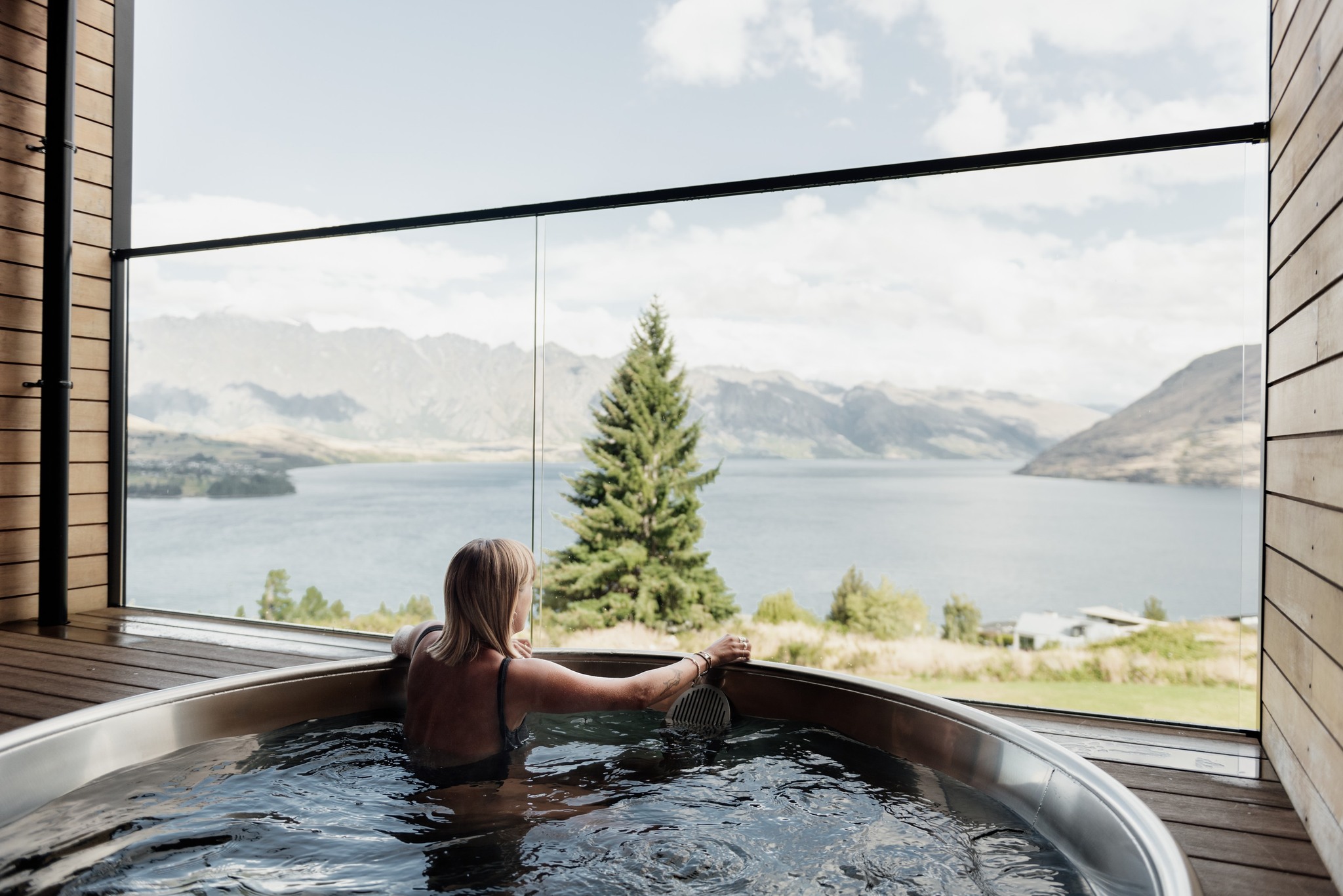
The chic Kamana Lakehouse bills itself as the highest altitude hotel-cum-resort in Queenstown, and while it's not exactly set right atop a mountain, its lofty position affords knockout views of the aptly-named The Remarkables mountain range and Lake Wakatipu. The glass-encased, panorama-packing Nest restaurant is perhaps Queenstown's most imposing dining room. There are also some fancy, semi-outdoor and private hot-tubs, replete with views, available for rental houseguests. Adding what to do 10 days in New Zealand often includes staying at remarkable hotels like Kamana. See kamana.co.nz
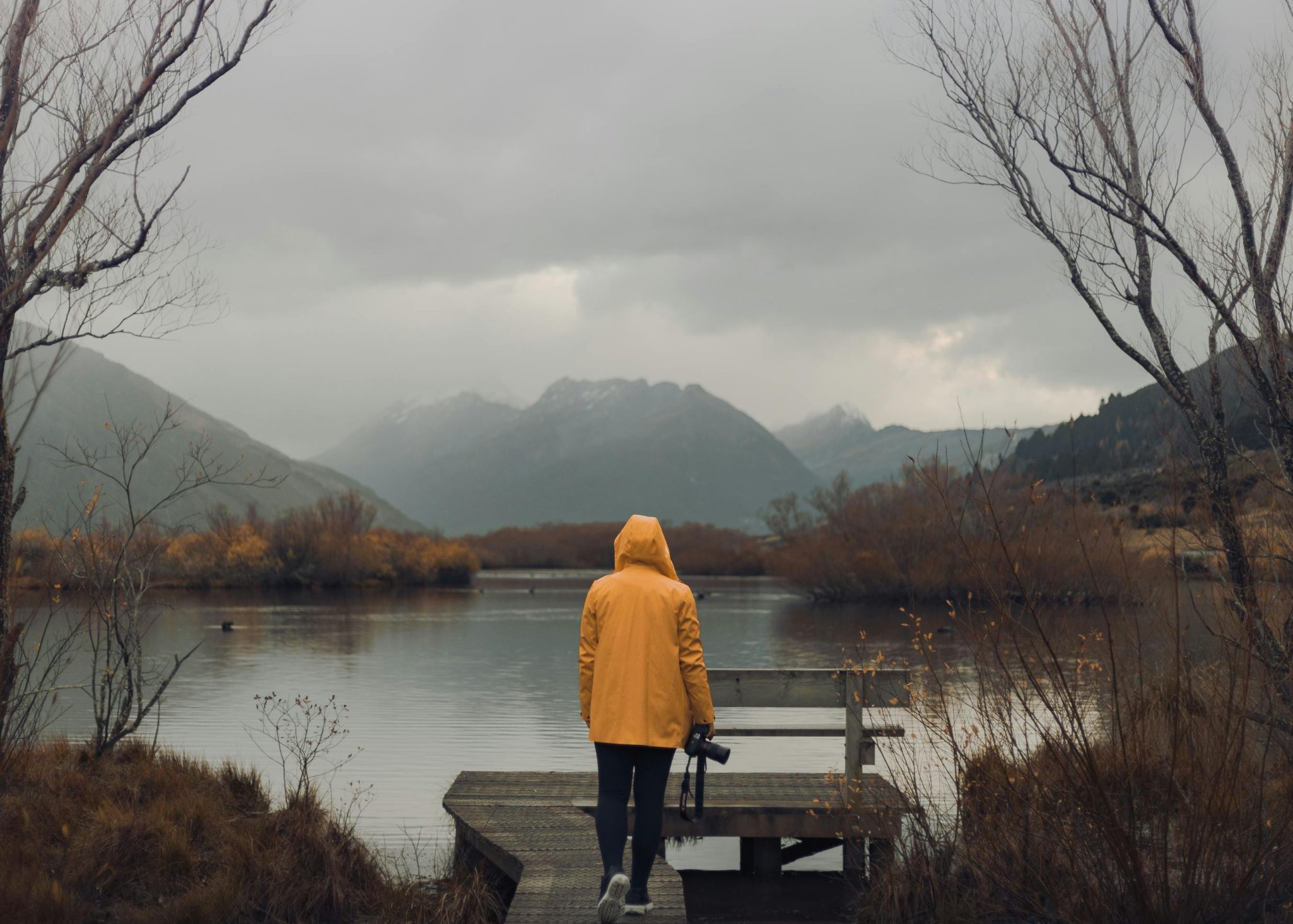
Hit the wondrously winding road to Glenorchy for a glorious 45-minute alpine drive from Queenstown. Nestled on the northern shores of the lake, Glenorchy itself is more village than town with the point of the trip being the sight of the dramatic surrounding Middle Earth scenery which acted as locations for The Lord of the Rings and Narnia flicks. It's also action stations central for everything from jet boating to cycling and walking to kayaking. See queenstownnz.co.nz
Thermal hot-springs-blessed Kiwis adore a good soak, as they call a therapeutic steamy dip, so it's no wonder that the well-run Japanese-style Onsen, nestled in the mountains at Arthurs Point, is so popular. Reserve your private, cedar-lined bath well before your head across that other well-filled tub known as the Tasman. You can order wine and snacks as you immerse yourself in both the warm waters and the surrounding mountains and valley outlook, adding relaxation to your list of what to do 10 days in New Zealand. See onsen.co.nz
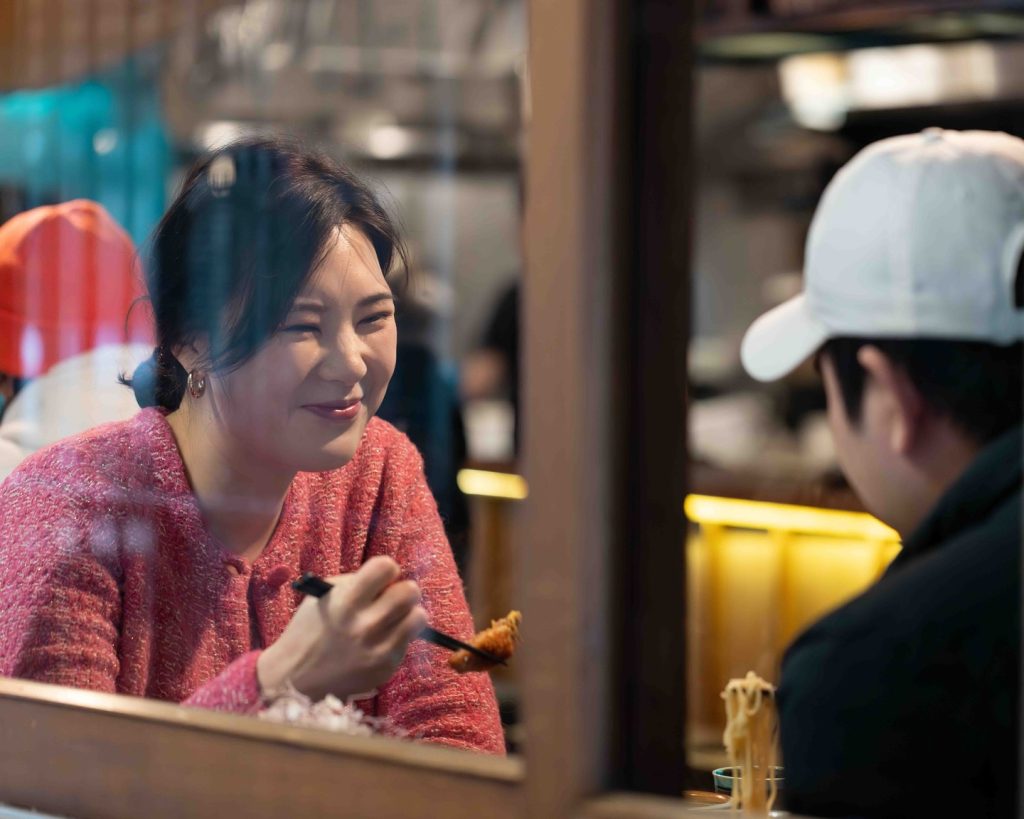
In the middle of a frigid Queenstown winter, or for that matter any season, there are few cosy and more congenial places to eat and drink than Tanoshi, an izakaya (a lively Japanese bar serving small, typically inexpensive, dishes and drinks). Tucked away in the always mooing Cow Lane in the lively Queenstown CBD, perch yourself up at the counter for the best view of the action and some craic with the amiable crew. See tanoshi.co.nz
Rather than flying in directly, tackle the so-called "Powder Highway" to Queenstown from Christchurch. This almost 500-kilometre inland scenic road trip traces its route along the mighty Southern Alps with the drive at its most dramatic in winter. Including a scenic drive as one of the activities is popular when planning what to do 10 days in New Zealand. See christchurchnz.com
Anthony Dennis visited as a guest of Tourism New Zealand, QueenstownNZ and Air New Zealand. See newzealand.com; queenstownnz.co.nz; airnewzealand.com.au
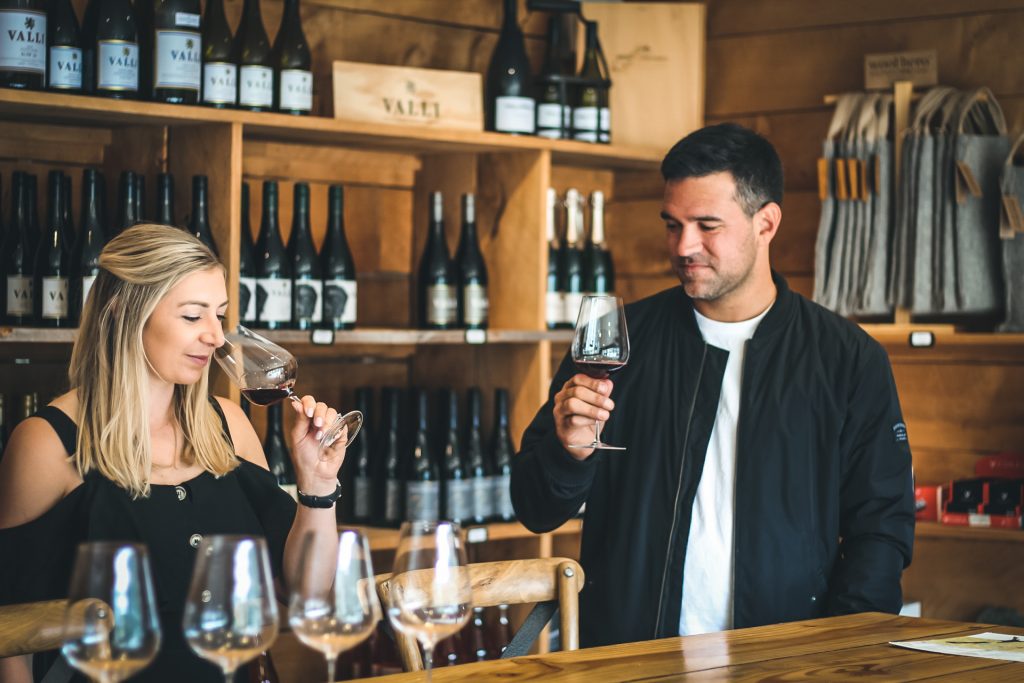
Want to learn how to taste and evaluate a glass of wine like a wine connoisseur? With the right approach, you can taste wine like an expert. If you want to swirl, sniff and sip like a pro then check out these top tips from award-winning Central Otago boutique winemaker, Waitiri Creek Wines.
Navigating the world of wine drinking can be an overwhelming experience for new wine drinkers. “However, all you really need to drink wine correctly is to be curious and enthusiastic to try new things,” says Alistair Ward founder and owner at Waitiri Creek Wines. Each wine has its own personality reflecting the type of grape, vintage (year) local climate and winemakers flair, he says.
The first step in tasting wine is to inspect the wine colour. The colour of wine gives you hints about its style, body and character. The colour can also indicate the wine’s age. Usually, white wine deepens in colour as it gets older while red wine becomes paler.
You can examine the wine by looking straight down into the glass, then holding the glass up to the light, and finally, give it a tilt, so the wine swirls toward the edges. “This will allow you to see the wine’s full color range,” comments Alistair.
If the colour looks quite pale and watery near its edge as you swirl it, this suggests that the wine could be lacking in flavour. In white wine, if the colour looks tawny or brownish (or orange in red wine) this is indicative of an older wine or a wine that has been oxidized and may be past its peak.
Now that you’ve given the wine a good inspection, you should now be ready to take a good sniff. Give the glass a swirl as swirling will aerate the wine and releasing all the aromas. “Take a few quick, short sniffs, then step away and see what smells you can identify,” adds Alistair. Common wine aroma includes descriptors of fruity, woody, pungent, floral, spicy, nutty, and chemical.
The next step is the fun part – tasting! Take a sip and swirl it around in your mouth until it coats every part your tongue. “This will warm up and aerate the wine, which helps in releasing its unique flavors,” advises Alistair. The palate of the wine should reflect the aromas as flavours. Here is what to look out for:
Now that you understand the basic steps of wine tasting, it’s time to experiment on your own. Teaching yourself to taste wine engages the senses of sight, smell, taste, and touch, all with the goal of finding a wine that you can enjoy with your favourite friends and food.
Repost with permission from Waitiri Creek Wines
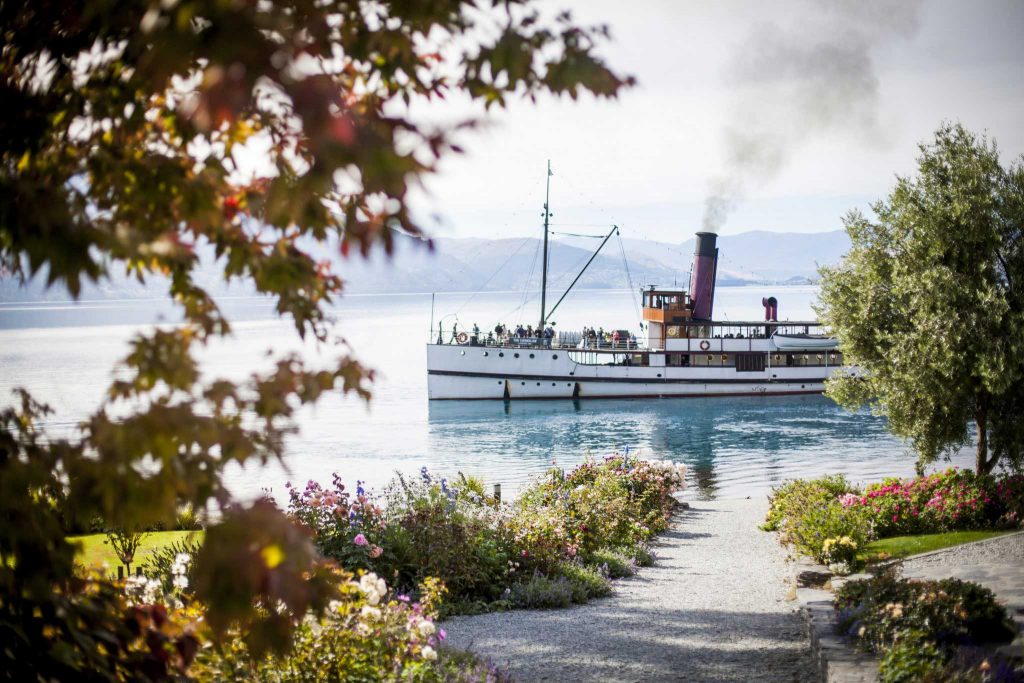
Combining activities into combo tours, such as wine combo tours, is becoming increasingly popular among busy travelers looking to save both time and money. In a bustling destination like Queenstown, with countless “must-do” activities, maximizing time is key.
Over the years, we’ve noticed clients juggling schedules to fit everything in, which inspired us to simplify the process. As locals with strong partnerships, we’ve teamed up with other businesses to offer cost-effective combos that combine our wine tours with Queenstown’s most popular activities.
Booking is easy via our website, online system, or a simple phone call. This way, experiencing wine combo tours and the best of Queenstown is possible without the hassle!
We are delighted to present combination tours:
Book Now – Millbrook Golf & Boutique
Book Now – Millbrook Golf & Private Boutique
Book Now – Moa / Classic Wine Tour
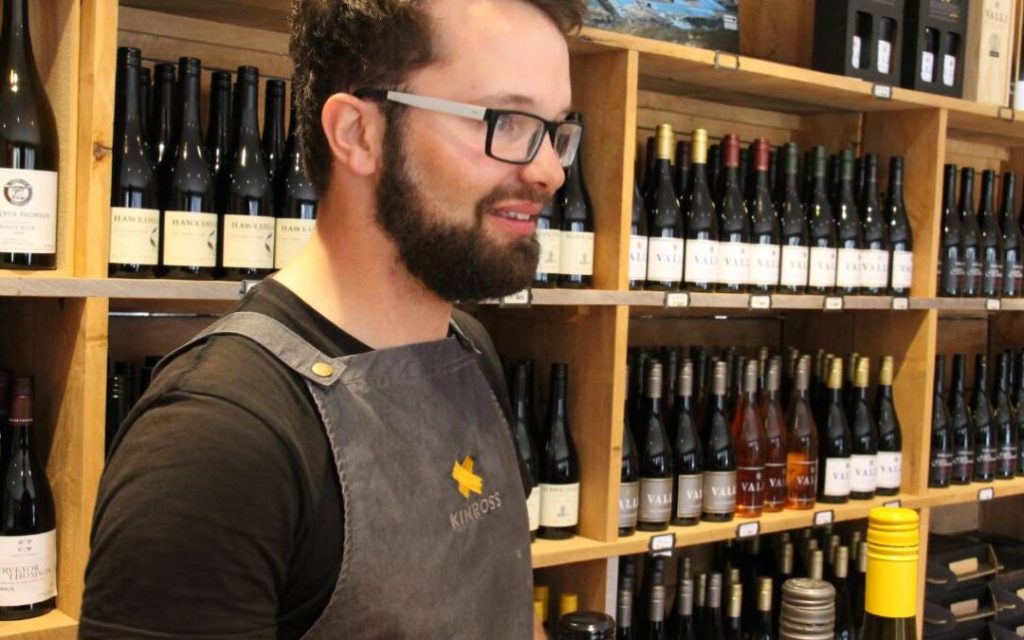
I must admit that I’ve never been game enough — or silly enough? — to do a bungy jump.
The flight into Queenstown wasn't too bad, despite the proximity of some pretty rugged terrain. Although, I am told that when the clouds and turbulence close in it can get a bit hairy.
The flight in is quite mesmerizing. It is a near-fine Spring day. Peaks extend all the way from the South Island’s west coast to Queenstown, freshly dusted with snow and looking just simply gorgeous.
You suddenly realise that it’s very different country to the rolling hills and flat plains of Central Western NSW. My journey had commenced there the day before. The next day I was driven past the Kawarau Gorge Suspension Bridge where AJ Hackett took bungy jumping to a commercial level in 1989. This gained worldwide notoriety for Queenstown.
I’m picked up from the airport by the Director of Operations at the very classy lakeside Rees Hotel. He gives me a quick tour of the town. Later, I join him for dinner in the hotel’s True South Dining Room.
Next morning I’m met in the Rees foyer by one of Appellation Wine Tours most experienced guides. Gavin is originally based in the UK. These days he is an old Queenstown hand with plenty of local knowledge to impart.
The plan for the morning is to explore several local spots before settling on a lunch destination in the historic heart of Arrowtown. In the afternoon, we’ll indulge in tastings at a selection of Central Otago’s renowned wineries.
Everything unfolds just as planned. However, I must confess, I quickly grow a bit numb to the city’s stunning natural beauty and its immediate surroundings. Friends who have completely fallen in love with the area are absolutely right in their praise.
The drive to our first destination, Moke Lake, is nothing short of breathtaking. Towering, snow-capped peaks frame vibrant green hills reminiscent of Ireland. This is all set against brilliant blue lakes—truly a feast for the eyes.
Moke Lake itself is a serene and exquisite spot. It is an isolated, largely untouched retreat with just a handful of campers savoring the peaceful atmosphere.
Accessed via a manageable dirt road, it’s the kind of hidden gem you’d only find if you knew where to look. I later learn that acclaimed filmmaker Jane Campion runs a women’s camp further along the lake’s shore.
After such an overwhelming display of natural beauty, you might expect everything else to pale in comparison. However, as Normie Rowe once sang, “it ain’t necessarily so.”
I meet the warm and charismatic American-born artist Thomas L. Brown and get a tour of his remarkable studio. Later, I pause to admire Lake Hayes—much larger than Moke Lake—as I make my way toward the charming township of Arrowtown.
Arrowtown is a charming town. It is rich in history thanks to its gold-prospecting roots, though it does come with its share of typical tourist trappings.
For lunch, I opt for Terra Mia—a lively, family-run Italian spot right on the main street. The pizza is solid, paired perfectly with a couple of glasses of local rosé.
Later, I join a group of five for a Central Otago wine tasting. I shift from solo explorer to part of a small crew.
Not so long ago they reckoned that Central Otago was too cold for viticulture. Though it’s probably the world’s most southerly wine region, it experiences quite hot, dry summers. As a result, it has no problem ripening some of the world’s best pinot noir.
One of the participants has been world-renowned film actor Sam Neill, who started his Two Paddocks venture in 1993.
These days, the area sports more than 40 significant vineyards and wineries. I covered three of them that afternoon — Akarua Wines, Gibbston Valley and Kinross.
Kinross … a great tasting of wines by smaller growers.
The latter was certainly the most interesting, acting as cellar door for a number of Central Otago’s smaller producers.
For a former winemaker, it was a bit of a ‘dog-in-a-forest exercise’ of what to try next. However, I think it was Grant Taylor’s pinots from Valli Vineyards that really set the tastebuds thinking and chattering.
He’s won the title of producing the world’s best pinot noir an unprecedented four times in London. He won in respected international competition and it’s quite obviously world-class red.
A sip certainly set the scene for the following night’s degustation dinner at the Rees Hotel. We enjoyed a line-up of Central Otago pinots from Felton Road, one of the region’s top producers of the variety.
John Rozentals was a guest of the Rees Hotel and Queenstown Tourism.

QUEENSTOWN IS BEST known as New Zealand’s adventure travel capital, with its ski fields on the imposing Remarkables and surrounding mountains, jet-boat rides and, of course, bungee jumping. But this South Island town has also become an epicentre for sustainable tourism ventures. These ventures address the growing demand for more environmentally responsible holidays. Embrace the thrilling organic wine trail here by doing the rounds of certified-organic wineries. These wineries make magnificent pinot noirs and white varietals. Take a tour of rugged Queenstown backcountry in a Tesla Model X powered by renewable energy. Then, return to town for a night of locally sourced fine dining. Finally, retire to a five-star hotel that’s enthusiastically embraced sustainable practices.
Encouraging the drive to more responsible tourism is a national government with an appetite to address the challenges of climate change. This government has committed the country to becoming a world leader in climate action. Then there’s the partnership between Air New Zealand, Tourism New Zealand, the Department of Conservation and the Maori tourism body, among others, to develop the Tiaki Promise. This initiative encourages both overseas and Kiwi travellers to experience the country in a considerate way. It aims to protect New Zealand’s environment for future generations and respects local cultures. Visitors are asked to commit to the Tiaki Promise at the beginning of their journey to New Zealand. For full details, go to tiakinewzealand.com, perhaps before embarking on the organic wine trail.
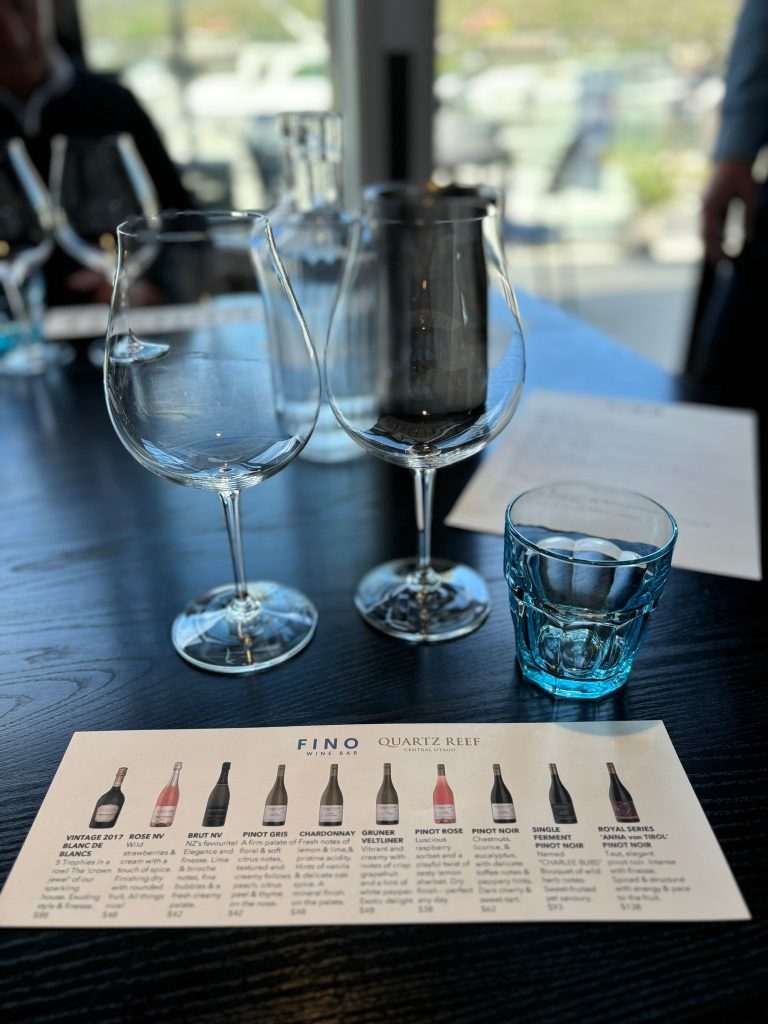
The Central Otago wine region is home to dozens of world-class wineries, including more than its fair share of organic producers. In fact, around 25 per cent of the vineyard land area in the region is certified organic or biodynamic. This is well above the national average. Appellation Wine Tours can create a customized itinerary. This itinerary will allow visits to the cellar doors of some of the leading sustainable wineries along the organic wine trail of Central Otago. This may include Quartz Reef, a pioneer in biodynamic winemaking led by Austrian-born Rudi Bauer. Bauer converted the first vineyard in the region to organic production, starting the process in 1989. This process took three years to complete. You can sample Quartz Reef’s award-winning biodynamic sparkling wines, pinot gris, and pinot noir at its tasting room in the town of Cromwell.
Then there’s Peregrine, on the main road out of Queenstown in the Gibbston Valley. It was certified organic across its range of whites and pinot noir in 2017. Peregrine director Fraser McLachlan says being organic “is a no-brainer for us”. “As a kid I sprayed herbicide [in the vineyard] but I didn’t understand it. Now that we’ve converted to organic, I wouldn’t have it any other way. It’s just as commercially viable as non-organics once you get through the conversion process. The process is better for the environment and it’s better for our staff, knowing they're part of the organic wine trail. They know that they’re not having to inhale or touch poisonous products. Additionally, they know the soil is being looked after as well.”
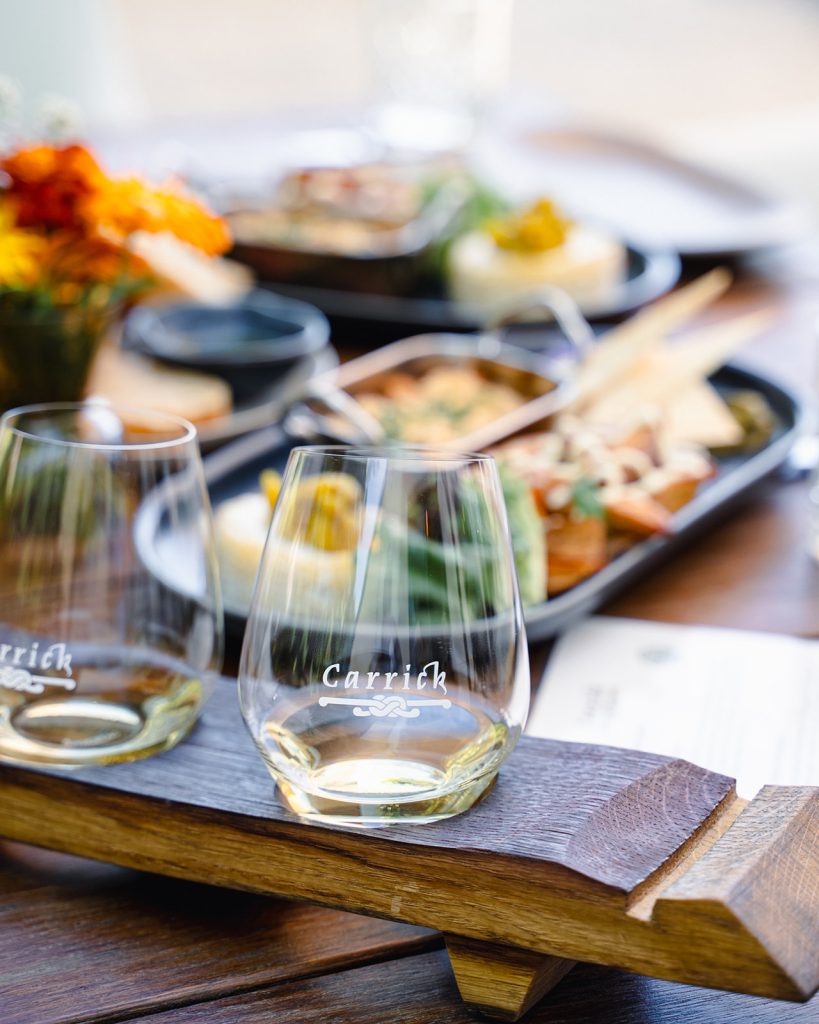
For Carrick, a small Bannockburn winery, the need to care for the soil prompted a move to organic and biodynamic practices. All its wines have been certified organic since 2011. “The soils here are really poor: they’re old glacial loess, really sandy, high in minerals but low in organic matter,” says Carrick winemaker Rosie Menzies. “So to encourage organic matter in the soil, organics is really important, as is biodynamics.” Alongside pinot noirs, chardonnays, and Rieslings, Carrick also produces a surprisingly drinkable natural wine, the Billet Doux pinot noir. Sample them at the winery’s restaurant, which serves hearty fare such as slow-cooked lamb for lunch daily. This embodies the essence of the organic wine trail, using produce from its kitchen garden.